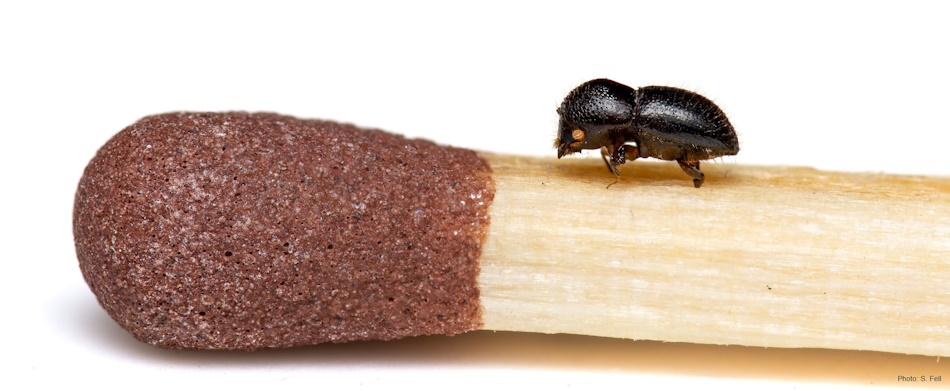Fusarium kuroshium is the primary fungal symbiont of an ambrosia beetle, Euwallacea fornicatus, and can kill mango tree in Japan
Zi-Ru Jiang, Momo Tanoue, Hayato Masuya, Sarah M. Smith, Anthony I. Cognato, Norikazu Kameyama, Keiko Kuroda & Hisashi Kajimura
Scientific Reports volume 13, Article number: 21634 (2023)
Abstract
This study identifies fungi associated with Euwallacea fornicatus and determines whether these fungal species play the role of primary symbiont. E. fornicatus adults that emerged from the branches of infested trees in Okinawa main island, Japan, were collected and used to isolate fungi. Fusarium kuroshium and Penicillium citrinum were the most dominant fungal associates of females and males, respectively. F. kuroshium was much more frequently isolated from the head, including mycangia (fungus-carrying organs), of females than any other body parts. We inoculated healthy mango saplings with F. kuroshium or F. decemcellulare, both of ...more ↓
Fusarium kuroshium is the primary fungal symbiont of an ambrosia beetle, Euwallacea fornicatus, and can kill mango tree in Japan
Zi-Ru Jiang, Momo Tanoue, Hayato Masuya, Sarah M. Smith, Anthony I. Cognato, Norikazu Kameyama, Keiko Kuroda & Hisashi Kajimura
Scientific Reports volume 13, Article number: 21634 (2023)
Abstract
This study identifies fungi associated with Euwallacea fornicatus and determines whether these fungal species play the role of primary symbiont. E. fornicatus adults that emerged from the branches of infested trees in Okinawa main island, Japan, were collected and used to isolate fungi. Fusarium kuroshium and Penicillium citrinum were the most dominant fungal associates of females and males, respectively. F. kuroshium was much more frequently isolated from the head, including mycangia (fungus-carrying organs), of females than any other body parts. We inoculated healthy mango saplings with F. kuroshium or F. decemcellulare, both of which were symbionts of E. fornicatus females infesting mango trees. F. kuroshium decreased leaf stomatal conductance and rate of xylem sap-conduction area and increased length and area of xylem discoloration of the saplings, thereby weakening and killing some. These results suggest that F. kuroshium, a mycangial fungus of E. fornicatus, inhibits water flow in mango trees. This study is the first to report that F. kuroshium causes wilt disease in mango trees and that it is a primary fungal symbiont of E. fornicatus.
https://www.nature.com/articles/s41598-023-48809-8
less ↑






